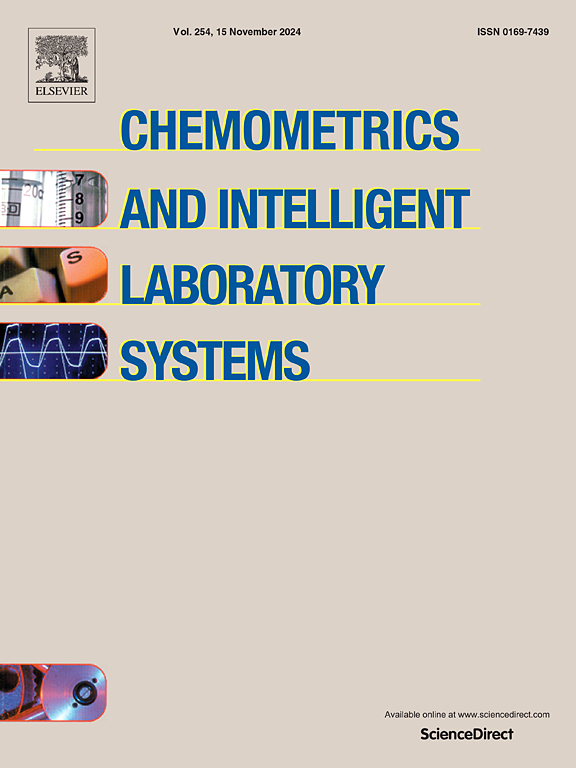Visualized correlation and distance preserving dimensionality reduction method
IF 3.8
2区 化学
Q2 AUTOMATION & CONTROL SYSTEMS
Chemometrics and Intelligent Laboratory Systems
Pub Date : 2025-04-17
DOI:10.1016/j.chemolab.2025.105406
引用次数: 0
Abstract
A large of existing dimensionality reduction methods are aimed at preserving some properties of data, which cannot take label information into account. With the aim of reduced low-dimensional coordinate is used as tool for timing judgment of model updating, the concentration information should be incorporated into dimensionality reduction procedure, which is presented and named as Visualized Correlation and Distance Preserving dimensionality reduction method. To address the difficulty of 2D coordinate and 1D label correlation computation, pairwise distance matrices in both the subspace and label space are computed and the strictly lower triangular parts of these matrices are extracted and vectorized in column-major order, resulting in two vectors so that correlation can be computed. Distance preservation term is included as sub-objective function to ensure the low distance dissimilarity between high and low coordinates. To reduce structural loss caused by sequential dimensionality reduction method, the projection matrix is concatenated to vector then optimized to ensure projection vectors are optimized synchronously. PCA transformation is continued to adjust the reduced coordinates to better suited for visual judgment.
可视化关联与距离保持降维方法
现有的大量降维方法都是为了保留数据的某些属性,无法考虑标签信息。为了将缩减后的低维坐标作为模型更新时序判断的工具,应将浓度信息纳入降维过程,并将其命名为可视化相关性和距离保留降维方法。为解决二维坐标和一维标签相关性计算的困难,计算子空间和标签空间中的成对距离矩阵,提取这些矩阵的严格下三角部分,并按列主序进行矢量化,得到两个矢量,以便计算相关性。距离保持项被列为子目标函数,以确保高坐标和低坐标之间的低距离相似性。为减少顺序降维方法造成的结构损失,将投影矩阵并入向量后再进行优化,以确保投影向量同步优化。继续进行 PCA 变换,以调整缩减后的坐标,使其更适合视觉判断。
本文章由计算机程序翻译,如有差异,请以英文原文为准。
求助全文
约1分钟内获得全文
求助全文
来源期刊
CiteScore
7.50
自引率
7.70%
发文量
169
审稿时长
3.4 months
期刊介绍:
Chemometrics and Intelligent Laboratory Systems publishes original research papers, short communications, reviews, tutorials and Original Software Publications reporting on development of novel statistical, mathematical, or computer techniques in Chemistry and related disciplines.
Chemometrics is the chemical discipline that uses mathematical and statistical methods to design or select optimal procedures and experiments, and to provide maximum chemical information by analysing chemical data.
The journal deals with the following topics:
1) Development of new statistical, mathematical and chemometrical methods for Chemistry and related fields (Environmental Chemistry, Biochemistry, Toxicology, System Biology, -Omics, etc.)
2) Novel applications of chemometrics to all branches of Chemistry and related fields (typical domains of interest are: process data analysis, experimental design, data mining, signal processing, supervised modelling, decision making, robust statistics, mixture analysis, multivariate calibration etc.) Routine applications of established chemometrical techniques will not be considered.
3) Development of new software that provides novel tools or truly advances the use of chemometrical methods.
4) Well characterized data sets to test performance for the new methods and software.
The journal complies with International Committee of Medical Journal Editors'' Uniform requirements for manuscripts.

 求助内容:
求助内容: 应助结果提醒方式:
应助结果提醒方式:


